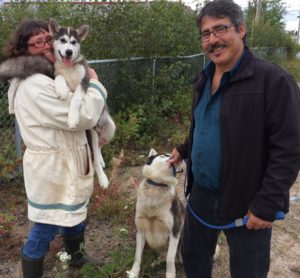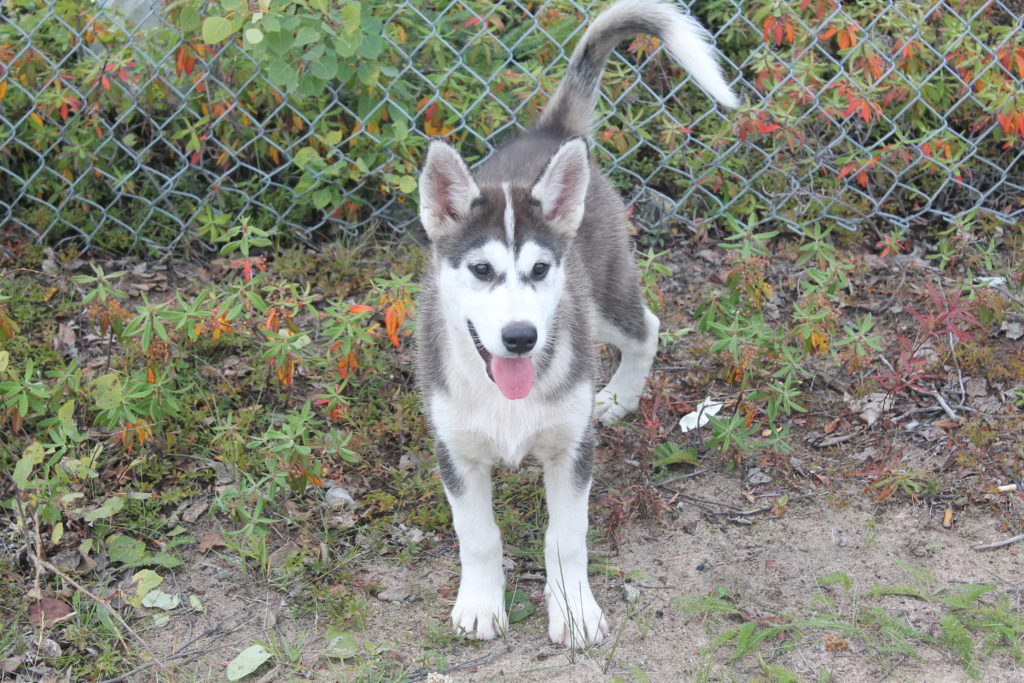Labrador husky owners, breeders and ‘mushers’ say the dogs have a special place in the history and culture of the ‘Big Land’.
Jonny Hodder
Kicker

They’ve been part of Labrador’s traditional Indigenous history for hundreds of years, but if someone told you your new dog is a “real Labrador husky” you’d probably have the same confused reaction as Lou Bowden.
“What does that mean? I don’t even know what that means,” she said, reiterating her initial reaction at the Halifax animal shelter.
Bowden first became aware of the breed when she unknowingly adopted one in 2010 and a volunteer at the rescue described her new fur baby, Polar, as a “real Labrador husky.”
Curious to know more about the obscure breed, she began searching online to find out more about the dogs, but she was surprised to find only a single, relatively scant Wikipedia page and a some anecdotal stories.
So, for the past seven years, she’s been on a quest to educate herself and others about the Labrador husky’s history and cultural importance.
“These dogs established Labrador,” she said. “They were the dogs used for fur trading and they were the dogs used to get medical doctors and dentists and stuff to people all throughout the 1900s and earlier.”

More than meets the eye
Bowden continued researching the Labrador dogs from her home in Halifax, Nova Scotia, and connected with people in Labrador who helped her cobble together a better understanding of the dogs’ history.
For one, they’re descendants of the Canadian Inuit dogs, a breed of husky used by the Thule (or proto-Inuit) people to haul sleds as they traversed northern Canada around 1000 A.D. Secondly, contrary to what the Labrador husky name might imply, they’re not a cross between a husky and a Labrador retriever.
They’re actually part wolf.
“A lot of it might have happened by accident, the breeding with wolves and that,” said Les Allen, a Labrador husky breeder and fifth generation ‘musher’.
“They would just have their dogs out around their home, right, and wolves would always come and hang out. And the wolf is not particular.”
A dog with distinct features
Allen grew up in Rigolet, a small community on the coast of Labrador where the dogs were traditionally used as working animals and hunting companions.
While the Labrador husky isn’t currently recognized as an official breed by the Canadian Kennel Club, he says the interbreeding of the Labrador wolf population with domestic huskies led to several distinct features, including larger paws, sable-tipped coats, and brown eyes — as opposed to the Siberian husky’s icy blue eyes.
Allen also acknowledges the wolf ancestry, as well as how they were traditionally kept solely as working animals, may have led to a more aggressive temperament in the past, something he says has been bred and trained out of today’s dogs.
“He’s probably not got much left of the high wolf content in this dog, cause I mean he’s a bit smaller and he doesn’t have the nature of the old dogs,” he said, pointing to his two year old husky, Ace.
“They weren’t socialized like we do with our dogs today … So, they were a lot more aggressive, the dogs, because it would be only the handler would be handling them. And if they had the higher wolf content they could be a bit snarly and unpredictable around other people, and even with owners.”
Bowden also attests to the improved, domesticated demeanour of the dogs’ modern lineage.
“I don’t think I’ve ever had an aggressive one or come across an aggressive Labrador husky in my life and I’ve had quite a few,” she said.
“Not a mean bone in their body.”
Getting the recognition they deserve
After several years of researching the dogs for “a couple of hours a day”, Bowden now maintains a website and two Facebook pages dedicated to discovering and preserving the history of the Labrador husky.
She’s also working to have the dogs recognized as a protected heritage breed by the government of Newfoundland and Labrador — a distinction previously granted to the culturally iconic, if somewhat physically diminutive Newfoundland pony.
Allen, who grew up around the dogs and still uses them for recreational sledding, maintains contact with Bowden and supports her efforts to obtain heritage status for the breed.
“It would only make sense that they would be our heritage dog,” he said.
“My argument is just to help preserve the culture of the Labrador Inuit. Just a reminder of where we came from. Who we are.”

Be the first to comment